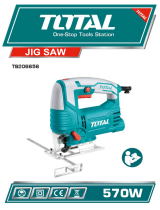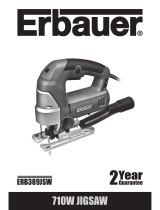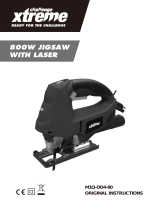Nordic POSA2230 is the perfect orbital sander for any DIY enthusiast or professional. With its powerful 750W motor and variable speed control, you can easily sand wood, metal, plastic, and other materials to a smooth, even finish. The ergonomic design and soft-grip handle provide comfort and control during use, while the dust extraction system helps to keep your workspace clean.
Here are some of the features and possible use cases of the Nordic POSA2230:
- Sanding wood: Nordic POSA2230 is ideal for sanding wood surfaces, such as furniture, doors, and floors. It can remove old paint or varnish, smooth rough surfaces, and create a fine finish.
Nordic POSA2230 is the perfect orbital sander for any DIY enthusiast or professional. With its powerful 750W motor and variable speed control, you can easily sand wood, metal, plastic, and other materials to a smooth, even finish. The ergonomic design and soft-grip handle provide comfort and control during use, while the dust extraction system helps to keep your workspace clean.
Here are some of the features and possible use cases of the Nordic POSA2230:
- Sanding wood: Nordic POSA2230 is ideal for sanding wood surfaces, such as furniture, doors, and floors. It can remove old paint or varnish, smooth rough surfaces, and create a fine finish.








-
 1
1
-
 2
2
-
 3
3
-
 4
4
-
 5
5
-
 6
6
-
 7
7
-
 8
8
Nordic POSA2230 is the perfect orbital sander for any DIY enthusiast or professional. With its powerful 750W motor and variable speed control, you can easily sand wood, metal, plastic, and other materials to a smooth, even finish. The ergonomic design and soft-grip handle provide comfort and control during use, while the dust extraction system helps to keep your workspace clean.
Here are some of the features and possible use cases of the Nordic POSA2230:
- Sanding wood: Nordic POSA2230 is ideal for sanding wood surfaces, such as furniture, doors, and floors. It can remove old paint or varnish, smooth rough surfaces, and create a fine finish.
Ask a question and I''ll find the answer in the document
Finding information in a document is now easier with AI
Related papers
Other documents
-
 Total TS206656 Owner's manual
Total TS206656 Owner's manual
-
Worx WX473.1 Safety And Operating Manual
-
 Erbauer ERB389JSW User manual
Erbauer ERB389JSW User manual
-
Hammerhead HAJS048 Owner's manual
-
Global Machinery Company SPJ2HM User manual
-
JCB JS710LE Safety And Operating Manual
-
 Challenge Xtreme M1Q-DD4-80 Owner's manual
Challenge Xtreme M1Q-DD4-80 Owner's manual
-
DeWalt DW331-XE User manual
-
Workzone M1Q-DD4-80 Owner's manual
-
Parkside PPHSS 730 SE Operating And Safety Instructions Manual










